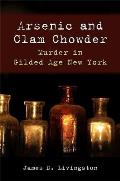In The Novel Cure, Elderkin and Berthoud suggest Agatha Christie, specifically Poirot, as a cure for the flu. They recommend The Murder of Roger Ackroyd. Unfortunately I didn't have any Christie in the house and the public library didn't have any ebook or e-audio versions available to check out. I refuse to pay for ebooks so I was out of luck. Following Elderkin and Berthoud's logic, I decided that what I needed was an engrossing mystery.
source: my mom
(she picked it up at the take-a-book-leave-a-book shelf at a hotel)
(she picked it up at the take-a-book-leave-a-book shelf at a hotel)
Rivers of London by Ben Aaronovitch (published as Midnight Riot in the US)
series: Peter Grant (1)
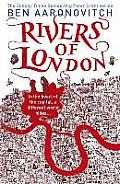 A paranormal police procedural, Rivers of London takes place in a modern day London, in which the Metropolitan Police Service has a special, secret branch responsible for dealing with "the magic" when it poses a threat to the Queen's peace. Probationary Constable Peter Grant (protagonist and first-person narrator) learns of the secret branch when he's assigned to assist Detective Chief Inspector Thomas Nightingale with a case. That doesn't happen, though, until after Grant has interviewed an eyewitness to a murder who just happens to be a ghost.
A paranormal police procedural, Rivers of London takes place in a modern day London, in which the Metropolitan Police Service has a special, secret branch responsible for dealing with "the magic" when it poses a threat to the Queen's peace. Probationary Constable Peter Grant (protagonist and first-person narrator) learns of the secret branch when he's assigned to assist Detective Chief Inspector Thomas Nightingale with a case. That doesn't happen, though, until after Grant has interviewed an eyewitness to a murder who just happens to be a ghost. The primary storyline (serial murder) was a bit overcomplicated1 for my flu-addled brain, but I enjoyed Rivers of London nonetheless. The secondary (titular) storyline was quite interesting and easy to follow. I also appreciated the overarching story of the protagonist as he first discovers the world of magic and then becomes an apprentice wizard.
Aaronovitch does a great job of world-building. There's the recognizable and well-described London from which he lifts the veil. He gives readers just enough paranormal activity to indicate the extent to which magic permeates his world, but not enough to overwhelm them and/or the story. British magic has an interesting backstory (Isaac Newton "codif[ied] its basic principles," 81) as I'm sure does Nightingale, to whom Grant becomes apprenticed. Home base for the secret branch (The Folly) is also populated by an inexplicable character named Molly, who is indispensable to the functioning of the branch.
Peter Grant is an everyman character (mixed race, distractible, and decidedly average with the exception of an aptitude for magic). He also has two love interests: another probationary constable (who I assume will be a recurring character in the series as it goes forward) and a magical person he encounters in the course of his work on the titular storyline.
I read Rivers of London ravenously and I'm quite eager to read more of Peter Grant's adventures. There are three more books (so far) in the series, but it seems like only the second installment (Moon Over Soho)2 has been published in the US so far.3
A note on the cover art. I much prefer the art on Rivers of London (and the other British editions) to the art on Midnight Riot (and the other American editions). I felt that way even before scanning other reviews and coming across one that mentioned a concern about white-washing with regard to the American editions.4 The art of the British covers focuses on the city, while the art of the American cover focuses on the character (and with that character focus, obscuring the race is problematic). Additionally, the British editions are quirky, with little details (about the story and about London) hidden in the artwork. I love that.
- It's described thusly (from the perspective of PC Grant) on the Rivers of London page of the author's website: "there’s something festering at the heart of the city I love, a malicious vengeful spirit that takes ordinary Londoners and twists them into grotesque mannequins to act out its drama of violence and despair. The spirit of riot and rebellion has awakened in the city, and it’s falling to me to bring order out of chaos – or die trying" (The Folly/Books/Rivers of London).
- Thankfully they haven't changed the title of this one for the American audience.
- Though a quick search of the public library catalog informs me that I can also get #3, Whispers Under Ground, from the library even though my branch doesn't have a copy.
- Neth Space shows two different versions of both American editions' covers and discusses this issue, see Neth Space: Another White-washed Cover?. I don't particularly either version of either of the American covers. The British cover art is much more appealing to me on many different levels.

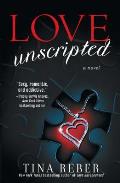 female lead: Small-town Rhode Island bar owner
female lead: Small-town Rhode Island bar owner 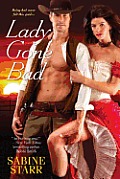 setting: 1880s Texas
setting: 1880s Texas 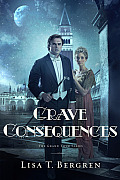 setting: Europe, circa 1913
setting: Europe, circa 1913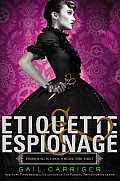
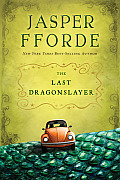
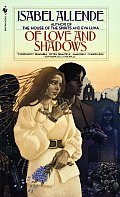 This is the story of a woman and a man who loved one another so deeply that they saved themselves from a banal existence. I have carried it in my memory, guarding it carefully so it would not be eroded by time, and it is only now, in the silent nights of this place, that I can finally tell it. I do it for them, and for others who have confided their lives to me saying: Here, write it, or it will be erased by the wind. -author's note
This is the story of a woman and a man who loved one another so deeply that they saved themselves from a banal existence. I have carried it in my memory, guarding it carefully so it would not be eroded by time, and it is only now, in the silent nights of this place, that I can finally tell it. I do it for them, and for others who have confided their lives to me saying: Here, write it, or it will be erased by the wind. -author's note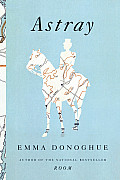 [F]or the past decade and a hlaf, I've been writing stories about travels to, within, and occasionally from the United States and Canada. Most of these travelers are real people who left traces in the historical record; a few are characters I invented to put a face on real incidents of border crossing. Many of them stray in several sense, when in the course of their journeys across geographical and political boundaries they find themselves stepping over other ones: law, sex, or race. Emigrants, immigrants, adventurers, and runaways--they fascinate me because they loiter on the margins, stripped of the markers of family and nation; they're out of place, out of their depth. (Afterword, 263)
[F]or the past decade and a hlaf, I've been writing stories about travels to, within, and occasionally from the United States and Canada. Most of these travelers are real people who left traces in the historical record; a few are characters I invented to put a face on real incidents of border crossing. Many of them stray in several sense, when in the course of their journeys across geographical and political boundaries they find themselves stepping over other ones: law, sex, or race. Emigrants, immigrants, adventurers, and runaways--they fascinate me because they loiter on the margins, stripped of the markers of family and nation; they're out of place, out of their depth. (Afterword, 263)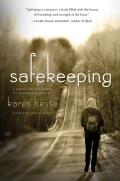 Teenage Radley Parker-Hughes is volunteering at an orphanage in Haiti when the President of the United States is assassinated. Despite the reports that have managed to filter to her remote location, Radley decides that she must return home to be with her parents during this time of unrest. When she arrives in Manchester, New Hampshire, she finds the country under martial law. Her parents' phone has been disconnected. She can't take a bus to Battleboro because she lacks the appropriate travel documents for crossing state lines. Radley's only choice is to walk home along country roads, trying to avoid being caught out after the newly imposed curfews.
Teenage Radley Parker-Hughes is volunteering at an orphanage in Haiti when the President of the United States is assassinated. Despite the reports that have managed to filter to her remote location, Radley decides that she must return home to be with her parents during this time of unrest. When she arrives in Manchester, New Hampshire, she finds the country under martial law. Her parents' phone has been disconnected. She can't take a bus to Battleboro because she lacks the appropriate travel documents for crossing state lines. Radley's only choice is to walk home along country roads, trying to avoid being caught out after the newly imposed curfews.
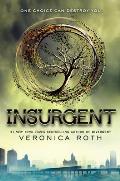 Considering how much I liked
Considering how much I liked 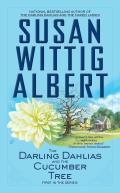
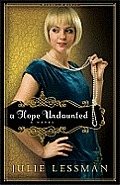
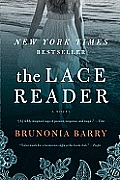
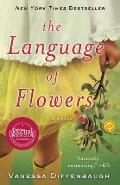
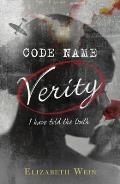
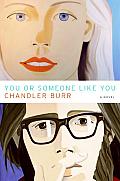 I don't find this novel's title or cover art particularly appealing.1 My familiarity with the author2 was the only reason I checked
I don't find this novel's title or cover art particularly appealing.1 My familiarity with the author2 was the only reason I checked 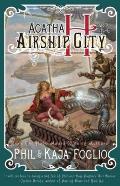
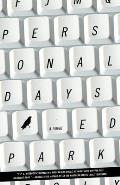 I checked
I checked 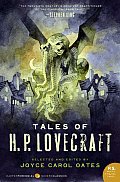 Even though I'm not supposed to be buying books for myself, I did pick up one during this latest blog-neglecting period. When I was book shopping for my nieces and nephews (a post on that topic coming soon) I happened across this deeply discounted title:
Even though I'm not supposed to be buying books for myself, I did pick up one during this latest blog-neglecting period. When I was book shopping for my nieces and nephews (a post on that topic coming soon) I happened across this deeply discounted title: 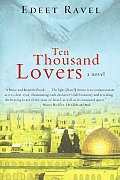
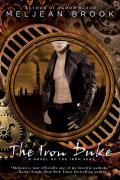 As I mentioned
As I mentioned 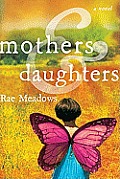 Examining the choices made by a line of women,
Examining the choices made by a line of women, 
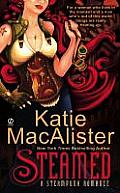 Jack Fletcher is a computer engineer and steampunk enthusiast. When his sister1 accidentally causes an explosion in Jack's lab, both are knocked unconscious. They wake in the hold of an airship in an alternative world that is the stuff of Jack's fantasies. He quickly becomes smitten with the ship's captain, the red-headed Octavia, who believes that the stowaways are spies.
Jack Fletcher is a computer engineer and steampunk enthusiast. When his sister1 accidentally causes an explosion in Jack's lab, both are knocked unconscious. They wake in the hold of an airship in an alternative world that is the stuff of Jack's fantasies. He quickly becomes smitten with the ship's captain, the red-headed Octavia, who believes that the stowaways are spies.